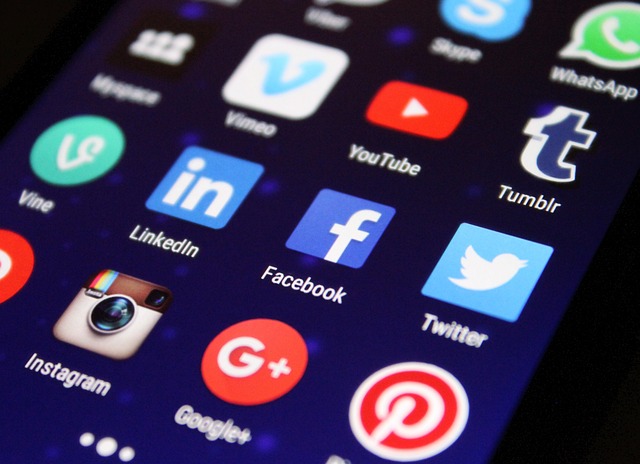The rise of the vlogger following has reshaped how people consume information, entertainment, and social validation. When a single creator can command millions of eyes, the lines between personal curiosity and compulsive engagement blur. In recent studies, researchers noted a marked uptick in digital craving, with individuals logging extended periods scrolling, reacting, and commenting. The problem is not only the sheer volume of content but the relentless feedback loops engineered by platform algorithms. This article explores the addiction mechanisms at play, how they manifest in everyday life, and the broader social media impact on mental health.
At its core, a vlogger following is a social contract. Followers subscribe to a rhythm set by the content creator: scheduled uploads, live streams, behind‑the‑scenes footage. The contract is maintained by dopamine spikes triggered by likes, comments, and notification badges. Over time, the brain rewires to anticipate these rewards. Neurologists find that the anticipation phase activates the prefrontal cortex, while the reward phase engages the nucleus accumbens, mirroring patterns seen in substance dependence. Thus, watching a daily vlog can become a habitual cue–reward loop that, if unchecked, spills over into other aspects of daily functioning.
Psychological Pull of Consistent Content
Human cognition is wired for pattern recognition. When a vlogger releases a new video at predictable intervals, the brain registers this rhythm as a reliable signal. The uncertainty principle, which drives novelty‑seeking behavior, is satisfied by the next scheduled upload. This phenomenon is closely related to the “fear of missing out” or FOMO, a powerful motivator that can lead individuals to double‑tap, replay, and comment repeatedly. Even when the content offers little substantive value, the mere act of engagement satisfies a deep‑seeded need for social connection and self‑worth. Over time, this becomes a compulsive check that can erode the ability to focus on offline responsibilities.
Signs of Escalating Addictive Behavior
- Time distortion: hours of scrolling replace conventional daily tasks.
- Social withdrawal: friends and family feel sidelined.
- Emotional volatility: mood swings tied to comment threads.
- Sleep disruption: late‑night viewing interrupts circadian rhythms.
- Neglected self‑care: hygiene and nutrition decline.
These red flags often surface when a vlogger following moves beyond casual entertainment into a daily compulsion. Recognizing early symptoms is critical, as the brain’s plasticity allows for rapid re‑conditioning but also rapid deterioration if left unchecked.
Neurological Evidence of Dependency
Functional MRI studies reveal that viewing popular vlog content activates the same neural circuits as gambling. The anticipation of a new episode triggers dopamine release, while the actual content satisfies reward pathways. Over months, repeated exposure down‑regulates dopamine receptors, increasing the need for higher stimulation. This neuroadaptation is why individuals may seek larger, more sensational vlogs or spend hours commenting to maintain the same dopamine payoff. In essence, the brain rewrites its reward ledger, turning every scroll into a transaction that requires immediate gratification.
Impact on Daily Life and Relationships
When a vlogger following consumes a disproportionate portion of cognitive bandwidth, other domains suffer. Work performance drops as attention slips; academic projects suffer due to fragmented study sessions. Relationships can feel strained because the individual prioritizes online interactions over face‑to‑face conversations. Empirical surveys show that those heavily engaged in vlogger following are more likely to report loneliness, despite being surrounded by a digital community. This paradox underscores that social media addiction can distort the very connection it purports to provide.
Societal Ripple Effects
Beyond individual health, the social media addiction crisis fueled by vlogger following influences broader cultural patterns. Consumer behavior shifts as marketing teams capitalize on the constant visibility of brands in vlogs. Political discourse is affected when political content is consumed as entertainment, blurring fact from narrative. Educational environments face challenges as students rely on quick, bite‑size content for learning, often at the expense of deep, reflective study. Thus, the ripple extends from personal to public spheres, reshaping norms, expectations, and the very fabric of communal interaction.
Strategies for Reclaiming Balance
Addressing the vlogger following addiction requires a multi‑layered approach. First, self‑monitoring tools can help track daily screen time and flag periods of excessive engagement. Second, intentional substitution—replacing habitual scrolling with physical activity, reading, or creative hobbies—re‑anchors the brain’s reward system. Third, digital etiquette, such as setting notification limits and creating “offline zones,” can reduce instant gratification cues. Finally, therapy modalities like cognitive‑behavioral therapy (CBT) or mindfulness practices can help users develop resilience against compulsive triggers. Together, these strategies create a supportive scaffold that encourages healthier interactions with social media.
Community Support and Peer Accountability
Peer groups that share concerns about vlogger following addiction provide a platform for collective accountability. Regular check‑ins, shared progress logs, and mutual reinforcement of healthy habits foster a sense of belonging that counters the isolation often felt behind a screen. Moreover, community‑driven challenges—such as “no‑scroll weekends” or “vlog‑free hours”—create public commitments that enhance motivation and reduce relapse rates. By aligning personal goals with collective norms, individuals gain both the emotional support and the tangible structure needed to sustain long‑term change.
A Call to Mindful Consumption
The data is clear: a vlogger following is more than a leisure habit—it is a behavioral pattern that can hijack the brain’s reward circuitry. As society increasingly normalizes constant digital engagement, the threshold for addiction narrows. The solution is not to eliminate content entirely but to cultivate intentional consumption. By setting boundaries, seeking diverse offline experiences, and fostering open conversations about the hidden costs of constant connectivity, individuals can reclaim agency over their digital lives. The future of social media depends on the balance between connection and disconnection, and every new subscriber to a vlogger following is part of the decision that shapes this trajectory.
Research Gaps and Future Directions
While current research has illuminated many facets of the vlogger following addiction, significant gaps remain. Longitudinal data tracking individuals from adolescence into adulthood is scarce, limiting our understanding of long‑term trajectories. Moreover, most studies rely on self‑reported metrics, which can underestimate or overestimate engagement due to social desirability bias. Future work should integrate passive data collection through device usage logs, apply machine‑learning models to detect subtle behavioral shifts, and examine cross‑cultural variations in the perceived legitimacy of vlogger following. Policy implications, such as age‑restriction measures and algorithm transparency, also warrant rigorous evaluation to mitigate the risk of compulsive consumption without stifling creative expression.



